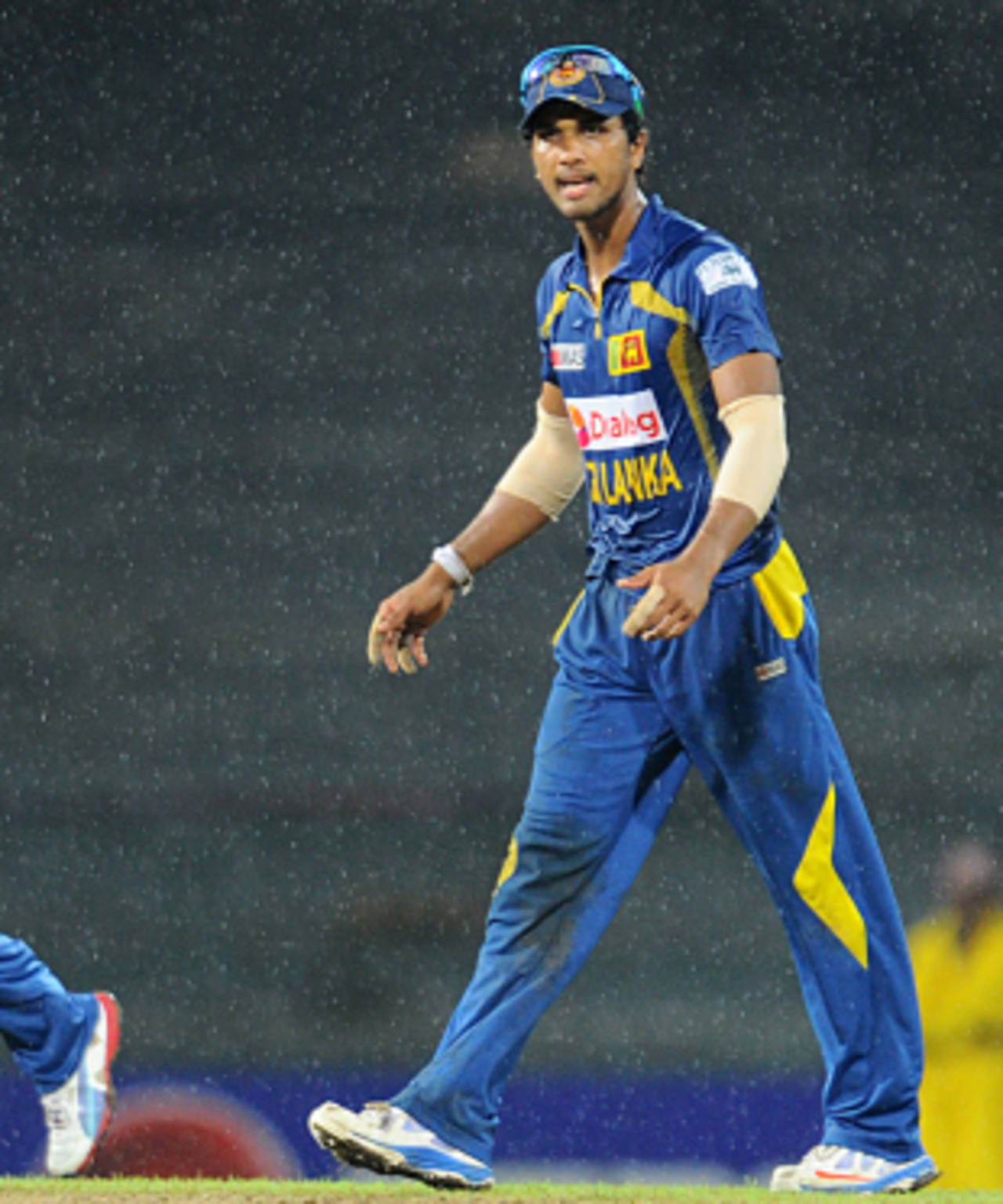When
Dinesh Chandimal was named Sri Lanka's Twenty20 captain in February, chief selector Sanath Jayasuriya justified his decision with these words: "We thought that it would be too much for Angelo Mathews, to give him the Twenty20 captaincy as well. We wanted to allow him to concentrate on the Tests and ODIs." At the time, the irony in his statement eluded many. After Sri Lanka's 2-1 home loss to South Africa, it has become clearer. In relieving Mathews of the Twenty20 reins, the selectors have overburdened another young talent, whose value to Sri Lanka lies primarily in the other formats.
Chandimal has long been spoken of as Sri Lanka's next great batting hope. An ODI hundred at Lord's in 2011 announced his potential on the big stage and this was underscored by the two fifties in his Test debut in Durban. He has since made encouraging enough gains in Test cricket to satisfy a steep set of expectations.
Yet it is the Twenty20 side he leads. Power has never been integral to his game, nor has finding the boundary at rapid rate. In 16 international T20 innings, he averages 13.18 and has a strike rate below 100. Unlike in ODI cricket, he can hardly claim he does not bat in positions that suit him. Half of his innings have been at no. 3 and a fourth of them at 4. Yet his average does not climb above 15 in either position.
Both he and Lahiru Thirimanne have recently
spoken of the immense challenges they face in their attempts to establish themselves in the game. They are tasked with producing their best domestic form at a much more demanding level and, in ODIs, have routinely gone to work in high-pressure situations to which they are unaccustomed. Chandimal's stroke range remains limited, and though his technique is more polished than when he first appeared, the best bowlers will still feel encouraged by its enduring raw aesthetic and they will think they are capable of locating its flaws. Given that Chandimal has not crossed 50 in 15 limited-overs innings, perhaps some bowlers already have.
There is a logic to the selectors' thinking, that is sound, perhaps even commendable. In his brief stints at the helm, Chandimal has proved himself creative and attuned to the game's heartbeat. His team-mates also seem to relish playing for him, feeding off the boyish enthusiasm with which he approaches all aspects of cricket. The school record for most outright wins in a season still belongs to the Ananda College side that Chandimal led at 18.
But the task ahead for him is a monumental one. He averages 58.30 in Tests, and if he is to provide any confidence that Kumar Sangakkara, Mahela Jayawardene and Tillakaratne Dilshan will not be missed, he cannot allow that figure to drop significantly. Chandimal was asked to take the gloves in Sri Lanka's most recent Test series, and might eventually inherit them in ODIs as well, when Sangakkara hangs his up.
His fine
one-day returns in Australia, England and South Africa marked him out as a special talent early on in his career, but his inability to make big runs in the subcontinent, has yet to be rectified. His technique against spin on turning tracks can hardly have had a more thorough inspection than Sri Lanka's first-class competition, but in ODIs, slow bowlers have succeeded in denying him early runs, and felling him when he seeks to attack. Chandimal has said he far prefers faster foreign tracks to the slow, dry ones at home, but as he plays most of his cricket in Asia, that is not an outlook he can allow to go unchecked at length.
Sri Lanka have also now begun to set sights on the World Twenty20 in Bangladesh next March. Having so far retained the top ranking they have had since the last global event, they will feel they are among the leading contenders to win the trophy, in conditions they should like.
But they will not be doing justice to their chances if they do not embark on that campaign with their best XI men. Chandimal, and to some extent Thirimanne, occupy places that befit more natural strikers of the ball. The provincial tournament that is about to begin may provide apt replacements and give an indication of players' form, but if Sri Lanka are to arrive in Bangladesh with their best possible combination, the selectors must act quickly. Sri Lanka have only three Twenty20 internationals confirmed for the seven months before the tournament.
The side's senior batsmen carried them through the home series against South Africa, as they have done for some years now. All three are yet to taste major tournament glory, and now may only have two more opportunities remaining to them before the years begin to weary their game. The selectors' quest for regeneration is meritorious, but if they seek to develop young talent only in the formats that suit each individual, for now, both the team and its youngsters stand to reap better benefits.
